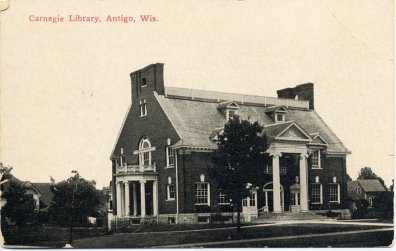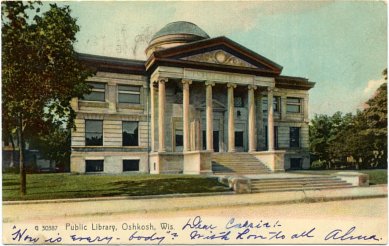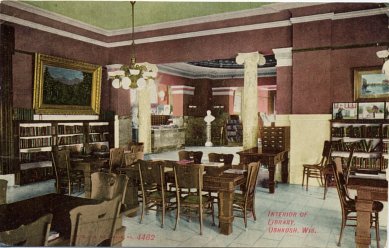
Wisconsin’s original public library law was introduced as Assembly Bill no. 87, 1872 on January 26, 1872 by Assemblyman Alexander Graham of Janesville, Wisconsin. It was approved by the Governor on March 22, 1872. The Graham Bill was remarkably similar to a bill introduced in the Illinois Legislature on March 23, 1871 and signed into law on March 7, 1872. So similar, in fact, that there is little doubt that Wisconsin’s public library law was based on the one in Illinois. A key provision is almost identical: “Every library and reading-room established under this act, shall be forever free to the use of the inhabitants of the city or village where located, always subject to such reasonable rules and regulations as the library board may find necessary to adopt and publish …”.
Erastus Swift Willcox (pictured above), while librarian of the Peoria Mercantile Library, a forerunner of the Peoria Public Library, conceived the public library law that was substantially enacted by both Illinois and Wisconsin in 1872 and which was a model for a number of other states. Although New Hampshire adopted a state public library law in 1849, a solid case has been made that Willcox’s public library law was the first comprehensive state public library law. Willcox realized that the fees charged by mercantile libraries and other membership libraries were not only inadequate for funding library service but that they were significant barriers to library use by the general public. Little is known of Alexander Graham’s motivation for introducing the Wisconsin law or the specifics of how he became aware of the Illinois bill. He was, however, a member of the Janesville Young Men’s Association, a membership library which experienced some of the same challenges as those of the Peoria Mercantile Library. A major motivating factor in the passage of the Illinois law was the movement to create a public library for the City of Chicago. The City of Chicago passed an ordinance under the new act creating the Chicago Public Library on April 1, 1872. The Black River Falls Public Library was the first public library created under Wisconsin’s public library law of 1872.








 This is National Postcard Week. Diana Dretske, collections coordinator for the Lake County Discovery Museum in Wauconda, Illinois, provides some
This is National Postcard Week. Diana Dretske, collections coordinator for the Lake County Discovery Museum in Wauconda, Illinois, provides some 